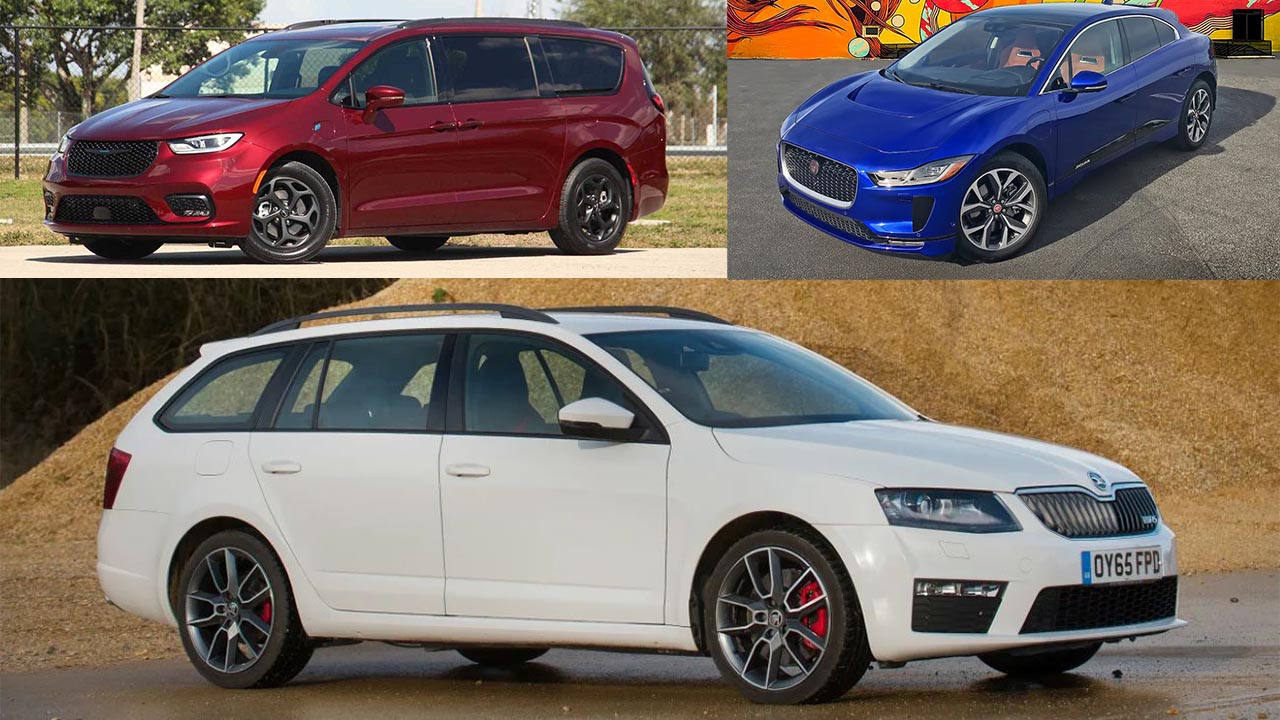In the vibrant world of the British used car market, it’s typically the well-known makes and models that dominate attention.
Yet, among the flood of familiar badges are overlooked gems vehicles that deserve more recognition but remain in the shadows, outshone by trendier names or momentary fads. These are the true underdogs, the most underrated used cars in the UK.
Put aside the obsession with brand prestige and flashy advertising. This list dives into a space where practicality, performance, and hidden value truly shine.
Most Underrated Used Cars
Here, you’ll find cars that deliver outstanding reliability, unexpectedly engaging driving experiences, and budget-friendly ownership costs without the inflated prices that often come with their more “mainstream” rivals.
5. Mazda MX-5 (2005–2015)
Forget about modern convertibles burdened with excessive technology and luxury features. The third-generation MX-5 is a true back-to-basics roadster fantasy.
Its precise handling allows you to slice through corners with surgical accuracy, the engaging manual gearbox practically demands smooth, satisfying shifts, and the top-down experience fills every drive with that unmistakable wind-in-your-hair thrill.
It delivers impressive fuel economy and benefits from Mazda’s well-earned reputation for reliability, virtually ensuring a constant grin behind the wheel. This modern classic isn’t merely a car it’s an open invitation to rediscover the unfiltered joy of driving on the open road.
It’s not often that a car achieves true iconic status, but the Mazda MX-5 is unquestionably one of the rare few that has. Since its debut in 1989, it has captivated drivers around the globe, been sold in massive numbers, and brought smiles to the faces of over one million proud owners.
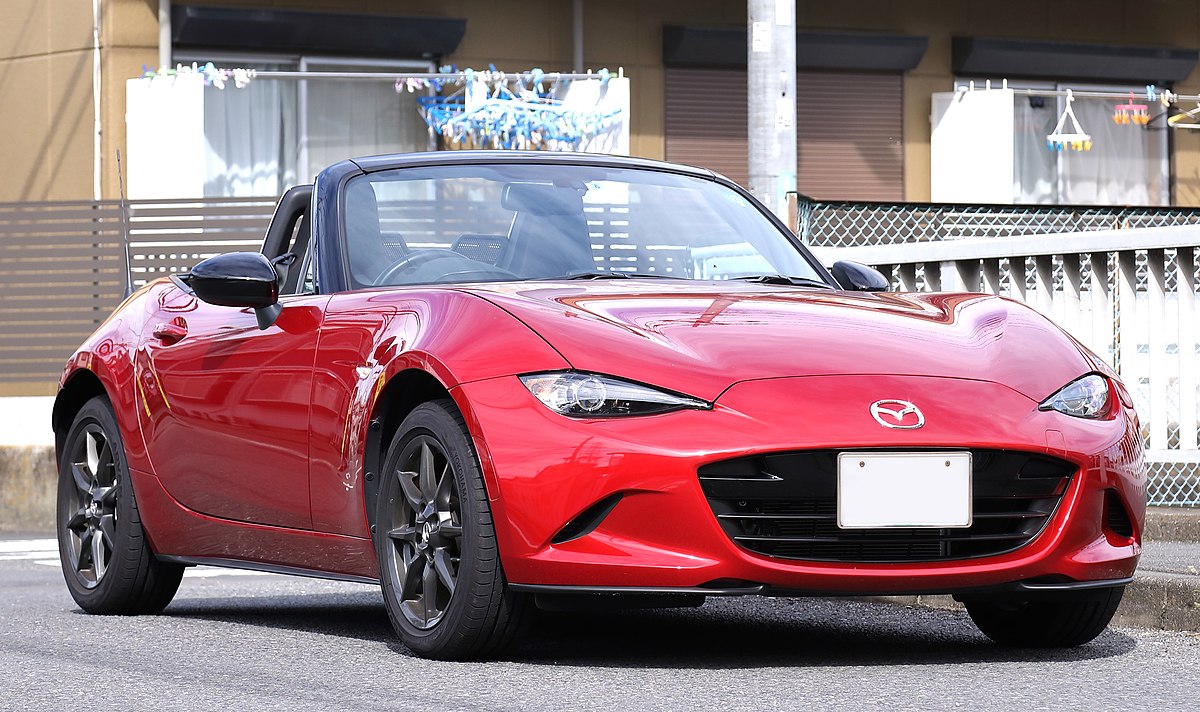
The vehicle in question here is the third-generation MX-5, which first appeared in 2005. In a notable departure from its predecessors, this generation was offered in two distinct versions.
Alongside the traditional soft-top roadster, Mazda introduced a Coupe Cabriolet variant. This version came with an electrically operated folding hard top, delivering the insulated refinement of a coupe while still allowing for open-air driving at the push of a button.
“The Mazda MX-5 is fun, fast and rock solid: what more could you want from a convertible sports car?” That statement sums up the essence of the MX-5 perfectly.
It’s genuinely enjoyable to drive, features a clever roof system, and is backed by a track record of excellent reliability. While it’s true that boot space is somewhat limited, this is a small compromise given everything else the car offers.
Regardless of whether you opt for the hard or soft-top model, the MX-5 stands out as one of the most rewarding cars to drive — no matter your budget or the badge on the hood. Both variants are remarkably agile, with steering that is precise and packed with feedback.
Its rear-wheel-drive chassis enables fluid, confident handling, and there’s ample grip to keep things engaging. Ride comfort is another strong point, particularly in the Coupe Cabriolet, which benefits from slightly softer suspension settings for a more composed feel over uneven roads.
While no two-seater sports car can truly be called practical, the MX-5 still manages to offer a surprising amount of comfort and a decent amount of space for two occupants. The boot, while not huge, is well-shaped and provides enough room for smaller bags or weekend luggage.
The affordability of the MX-5 is another reason for its enduring appeal. Not only is it reasonably priced new, but used examples have become increasingly attractive in today’s market.
Better still, the model enjoys a strong reputation for reliability and longevity — many units have been carefully maintained and continue to run without issue. Over its production run, this generation received two subtle facelifts, one in 2008 and another in 2013, both focused mainly on minor exterior updates.
All things considered, if you’re looking for a convertible that delivers open-air fun, strong reliability, and excellent driving dynamics, the Mazda MX-5 remains a standout choice.
Also Read: 5 Reliable Old Trucks and 5 That Are Best Left Alone
4. Skoda Octavia Mk3 (2013–2020)
Forget the idea that you need to spend a fortune for a family-friendly vehicle! This roomy and practical hatchback delivers far more than its price suggests.
As dependable as a Swiss watch, it boasts a wealth of features and even manages to impress with a smooth, enjoyable driving experience. It’s the ideal all-rounder for families and cost-conscious buyers who value both functionality and affordability.
Picture generous space for the entire family, a comprehensive list of features that cover all the essentials, and a driving experience that’s more engaging than expected all without draining your wallet.
This hatchback represents a smart choice for anyone seeking the full package without compromising on budget.
It was entirely fitting that the third-generation Skoda Octavia vRS made its global dynamic debut at the 2013 Goodwood Festival of Speed.
British drivers have long had a soft spot for sporty Skodas — the combination of solid performance, attractive pricing, and a no-nonsense approach consistently resonates with a nation known for its practical outlook.
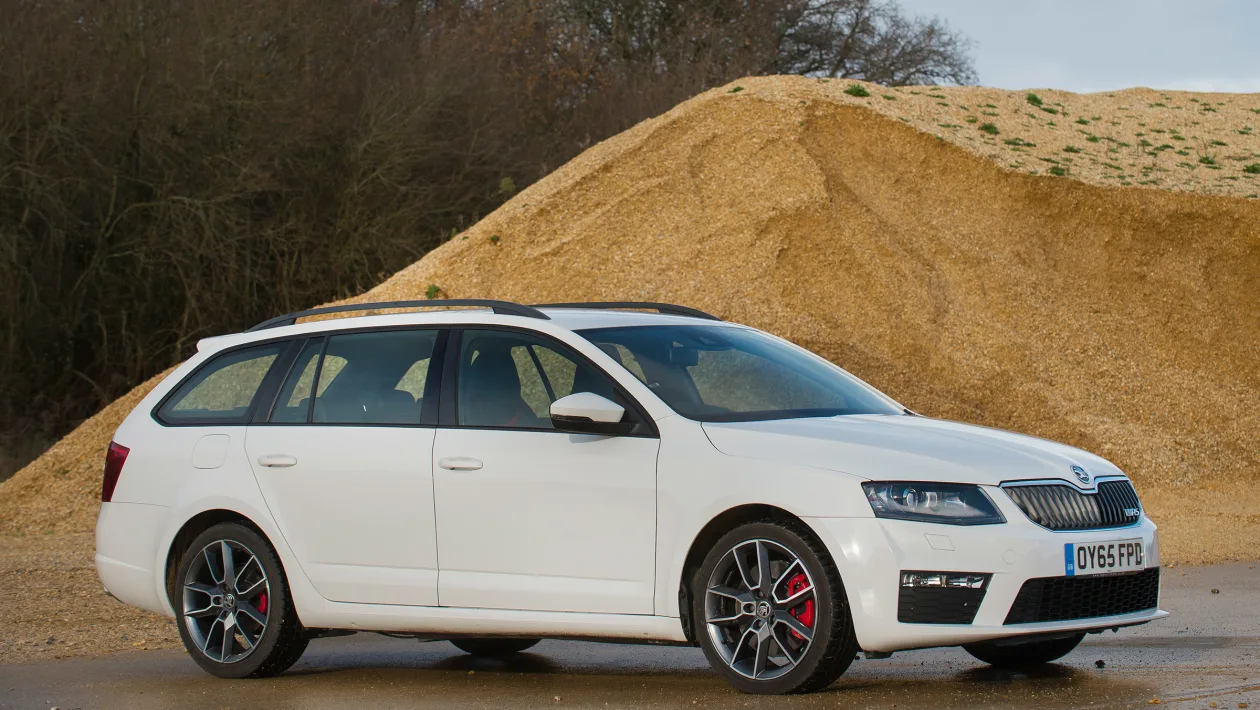
While the vRS may not have stolen the spotlight at the Duke of Richmond’s celebrated event, showcasing it at Goodwood placed it squarely in front of an informed and enthusiastic crowd — precisely the demographic Skoda aims to reach.
The formula behind the Mk3 vRS was a continuation of what had come before, drawing from the same core ingredients that made its predecessors successful.
It also shared a strong mechanical foundation with the contemporary Volkswagen Golf, and delivered a respectable 220hp. The big leap forward, however, came from its switch in platform architecture.
The previous generation’s PQ35 structure was replaced with Volkswagen’s MQB modular platform, resulting in a family hatch that was not only larger but also lighter. As with the transformation of the Golf GTI from Mk6 to Mk7, the Octavia saw a similar leap in refinement and capability.
This generation introduced a new powerplant — the now widely used 2.0-litre EA888 turbocharged engine. Although the power bump was modest at just 20hp, it brought with it better efficiency.
Combined with the advantages of the new chassis, the Mk3 became a noticeably more dynamic car to drive. Its design, crafted under the direction of Jozef Kaban, also gave the vRS a more assured and aggressive appearance.
‘Business as usual then. And business is good’ was how PH described it at the time. Buyers were offered a broad range: petrol and diesel variants, manual and automatic transmissions, and both hatchback and estate body styles — truly a vRS to suit all preferences.
In 2016, the Octavia vRS received a facelift that introduced a redesigned front end, bearing more than a passing resemblance to the W212-generation Mercedes E-Class. This update also brought a slight power increase, with 10 additional horsepower added to the vRS.
Shortly afterward came the vRS 245. The earlier 230 model saw the inclusion of the VAQ locking differential — a feature previously used in the Golf GTI Performance Pack. Meanwhile, the vRS 245 offered customers the new seven-speed DSG transmission as an option.
3. Citroen C3 Aircross Mk1 (2012–2017)
Forget the generic crossovers flooding the market! This distinctive gem stands out with its surprisingly spacious interior, cushy comfort, and a bold design that dares to break the mold.
Picture generous room for family outings and spontaneous adventures, all packaged in a style that grabs attention wherever you roam. But it’s more than just eye-catching looks the smooth, composed ride keeps everyone content, mile after mile.
This is the ideal option for families in need of practicality with a splash of flair, or for anyone eager to break away from the ordinary and embrace a car brimming with personality. So leave the predictable behind and get ready to enjoy a crossover that truly makes its mark!
The latest model replaces its C3 Picasso predecessor’s MPV body style with a more compact SUV design, bringing with it the promise of class-leading interior space made possible by a modular layout.
The C3 Aircross is offered in three trims: Touch, Feel, and Flair. Pricing for the mid- and top-spec variants begins at £15,100 and £16,900 respectively.
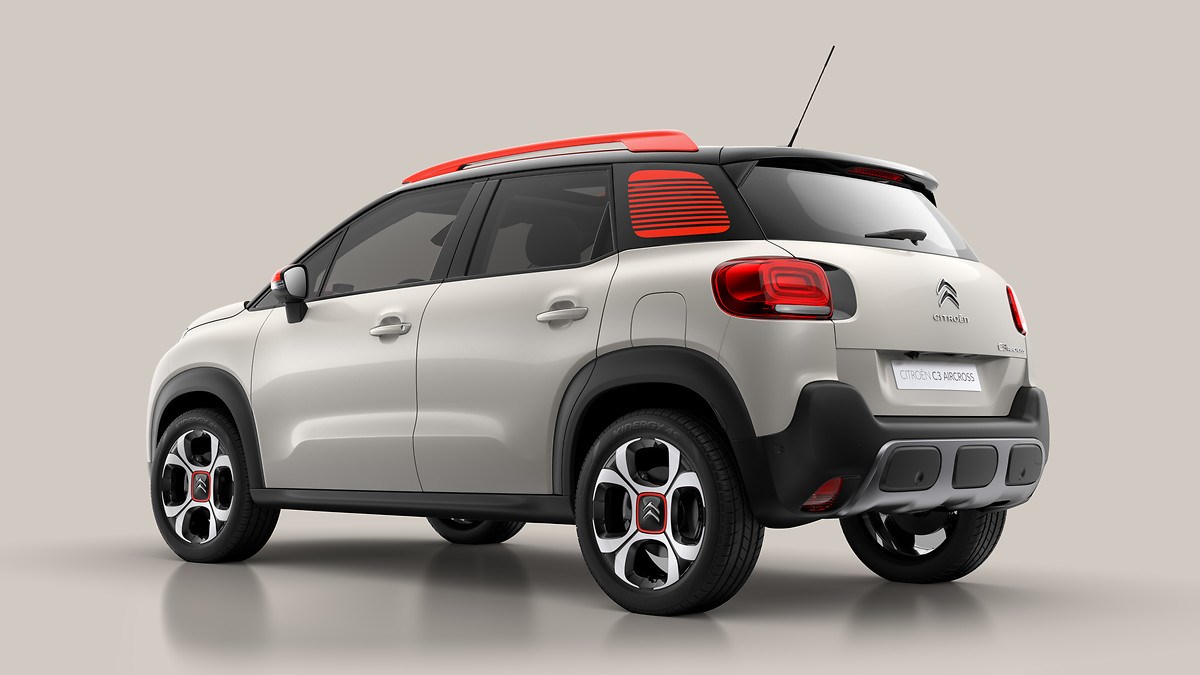
The styling of the vehicle draws clear influence from the C-Aircross concept showcased at this year’s Geneva motor show, representing a significant departure from the rounder, more utilitarian look of the C3 Picasso.
Citroën’s design director, Alexandre Malval, emphasized that this change in aesthetic is a deliberate part of the model’s transformation:
“We want to migrate people across from the C3 Picasso to the C3 Aircross, but we also want to attract younger customers,” he explained, adding that the C3 Aircross is “more playful” compared to the larger C5 Aircross. This, according to Malval, aligns with customer expectations for a smaller SUV.
A similar transformation can be seen in the cabin. The formerly busy and button-heavy interior of the C3 Picasso has been replaced by a more streamlined and upscale layout.
A 7.0-inch infotainment touchscreen has eliminated the need for many physical controls, and this new system supports smartphone mirroring and navigation. Wireless smartphone charging is also available as an additional feature.
2. Honda S2000 (1999–2009)
In an era dominated by turbocharged automatics, this open-top roadster remains proudly unyielding. Forget lifeless screens and overly cushioned rides this car delivers a raw, high-revving symphony of naturally aspirated excitement.
Every press of the throttle unleashes a mechanical masterpiece, with the engine eagerly urging you to chase the redline. Each curve in the road becomes your personal racetrack, the precise handling encouraging you to engage with every apex.
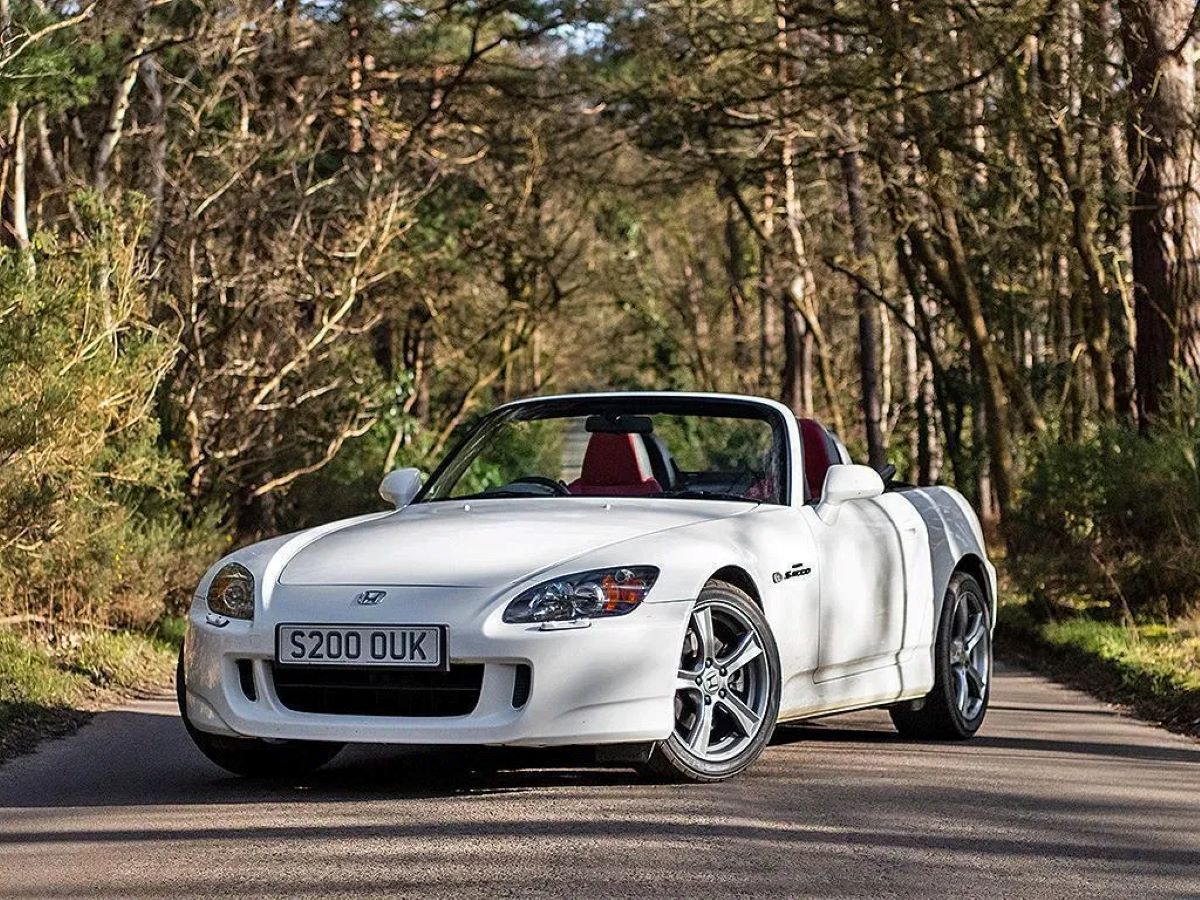
This isn’t merely a car it’s a visceral experience, a direct and unfiltered bond with the road and the pure exhilaration of driving. It’s a powerful reminder of what a true enthusiast’s dream machine really looks like.
Drop the top, let the wind rush past, and immerse yourself in the unrestrained joy of this modern classic throwback.
To mark its 50th anniversary, Honda treated itself to a spectacular creation—the wild and exhilarating S2000 roadster. Featuring one of the most impressive engines ever engineered, the S2000 was Honda’s bold declaration of its technical prowess, delivering a staggering 240bhp from a naturally aspirated 2.0-litre engine.
That figure surpassed the specific output of even the twin-turbocharged Lotus Esprit V8 GT, serving as proof of how far Honda had pushed the engineering envelope. With the rest of the car infused with Honda’s deep motorsport knowledge, it was crafted to deliver an almost spiritual driving experience for enthusiasts.
Now that used examples have begun to appear on the UK market, the question arises—does the S2000 represent an affordable dream or a mechanical gamble? You can find out here.
This is a car that, at least on paper, delivered the kind of performance that rivalled the flagship NSX—yet for less than half the cost.
Combine its sharp, aggressive design with an engine note reminiscent of a Formula One paddock echoing through local B-roads, and it looked like a guaranteed winner. Despite an initial surge in popularity, the S2000 eventually slipped off the hotlist of must-have sports cars.
o, was it overtaken by more capable competitors, or was its appeal simply a touch too niche for the typical British roadster buyer? Discover whether a used S2000 still holds up here.
The lineage of the S2000 stretches all the way back to Honda’s earliest sports cars—the S360 and S500, both revealed at the 1963 Tokyo Motor Show.
Those early models featured motorcycle-like engineering, including engines that revved to 14,000 rpm and chain-driven final drives, reflecting Honda’s origins in the world of motorcycles. By 1965, the S800 had joined the lineup, but it wasn’t until Honda’s 50th anniversary in 1999 that the S2000 made its UK debut.
Since its launch, the S2000 has seen only modest changes. A heated hardtop became available in late 2000 to address criticisms that the convertible was too uncompromising for daily use.
At its heart, the 2.0-litre engine, rated at 237bhp, delivers a specific output of 119bhp per litre—a record-setting figure for a naturally aspirated production car.
In early 2004, Honda implemented several suspension tweaks to address what some drivers saw as overly lively rear-end behavior, refining the car’s balance without dulling its edge.
1. BMW 1 Series Mk2 (2011–2019)
Forget the predictable nature of front-wheel-drive hatchbacks! This rear-wheel-drive standout harks back to the golden era of BMW’s iconic E30, delivering sharp handling and a lively character that practically begs for spirited outings.
Yet unlike its classic predecessor, it comes equipped with dependable engines, a well-appointed interior that makes daily commutes a pleasure, and an impressive array of options to tailor the driving experience to your liking.
This isn’t merely a sporty compact it’s an exceptional all-rounder, effortlessly shifting between exhilarating weekend drives and the demands of everyday practicality.
So strap in, feel the balance of rear-wheel precision, and rediscover the thrill of driving with this modern tribute to a motorsport legend.
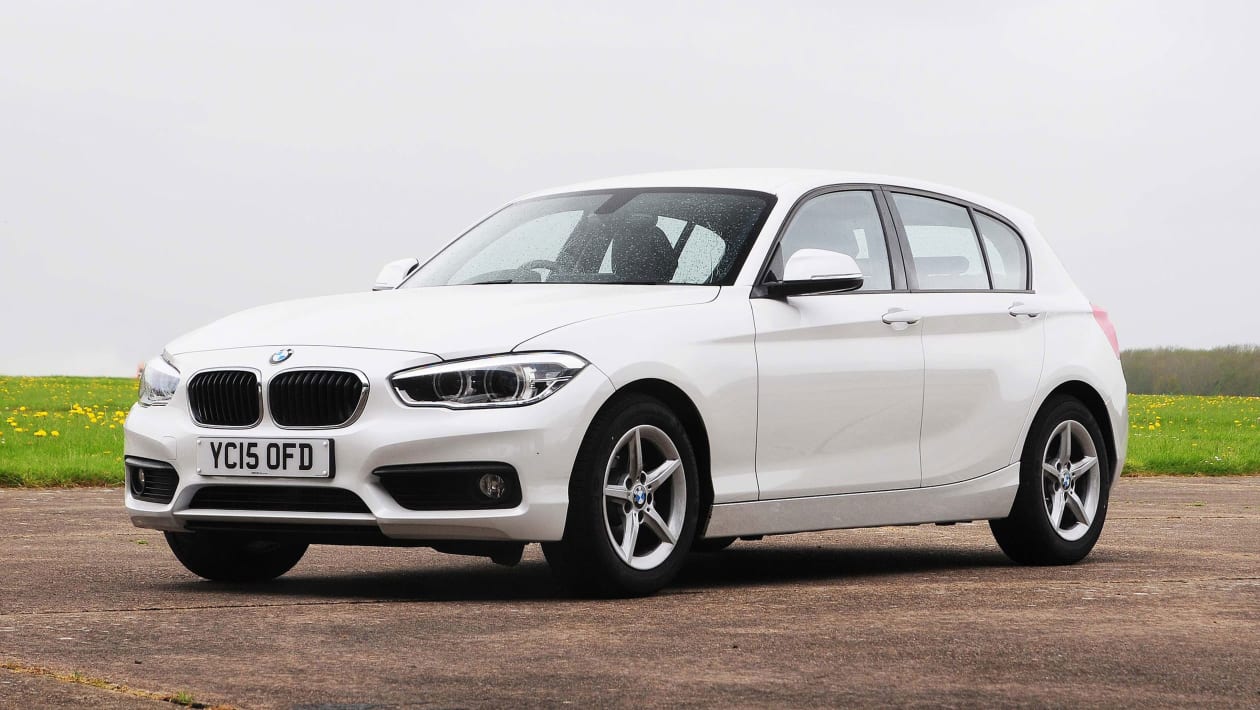
These days, the BMW 1 Series is such a common presence on the roads that it’s easy to forget there was a time it didn’t exist at all. BMW had long recognized the need to break into the family hatchback segment and appeal to younger drivers by offering a more affordable, livelier entry-level vehicle.
The brand’s first shot at this came in 1993 with the BMW 3 Series Compact. The concept was straightforward: take the 3 Series, shorten it, and fit it with a hatchback rear.
But in execution, this entry-level BMW fell short. It lacked a five-door option, limiting its practicality, and the interior—borrowed from the older 3 Series saloon—felt dated and cheap. It was a budget-friendly BMW, but it definitely came across that way.
An entirely new version of the 3 Series Compact launched in 2000, this time addressing the quality issues with a significantly improved interior.
Still, it remained a three-door model, and against rivals like the more versatile Mercedes-Benz A-Class and the polished Audi A3—both of which offered five-door variants—it came across as a half-measure.
In 2004, BMW retired the Compact and introduced the kind of car it arguably should have built from the outset: a dedicated model line with both three- and five-door options.
It maintained BMW’s signature rear-wheel-drive platform and offered a range of diesel and petrol engines, including both four- and six-cylinder choices. This marked the debut of the BMW 1 Series.
Also Read: Top 10 Budget-Friendly & Luxury Trucks You Can Buy
Most Unreliable Cars
With the average cost of vehicles steadily increasing and repair expenses continuing to rise, driving a dependable car has never been more crucial. While used cars often offer excellent value compared to buying new, not every model ages gracefully.
Putting your hard-earned money into an unreliable used car or SUV can quickly lead to frustration think frequent breakdowns, surprise repair bills, and major inconveniences that will make you regret the purchase altogether.
To assist you in making smarter choices, we’ve assembled a list of the most unreliable used cars and SUVs, using J.D. Power’s predicted reliability scores.
These ratings are based on three years of extensive data covering both initial quality and long-term dependability.
A score between 91-100 is considered the Best, 81-90 is rated as Great, 70-80 is Average, and any score from 0-69 is Fair, which signals below-average reliability.
So whether you’re looking for a trustworthy SUV or a reliable sedan, this slideshow highlights which used vehicles you should steer clear of.
We continually update the data and scores as new insights become available, so you may notice some variations between this slideshow and our full reviews.
1. 2019 Jaguar I-Pace
As Jaguar’s first all-electric SUV, the 2019 I-Pace impresses with its rapid acceleration and luxurious interior design. Its electric powertrain delivers a commendable range, setting it apart in the premium EV segment.
Were it not for its poor predicted reliability rating, this SUV would be an ideal choice for those desiring both innovation and refinement.
Unfortunately, the infotainment system in the I-Pace is widely criticized for being slow and unintuitive, which can be especially aggravating during everyday use.
While the 2019 I-Pace turns heads with its daring design, there’s little appeal in struggling with its technology or worse, facing unexpected breakdowns.
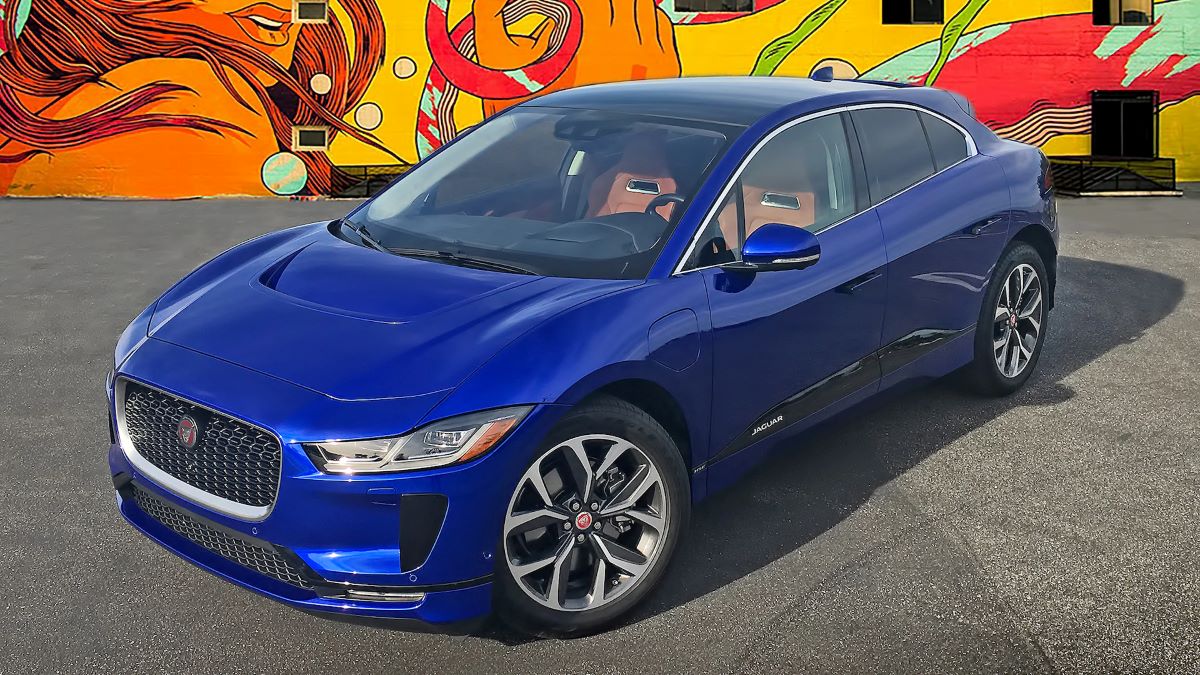
The Jaguar I-Pace comes packed with an impressive array of features and performance specs. Standard all-wheel drive is provided by two electric motors—one mounted at the front and the other at the rear—delivering a combined output of 394 horsepower and 512 lb-ft of torque.
Because that torque is available from 0 rpm, the I-Pace can sprint from 0 to 60 mph in a brisk 4.5 seconds (according to Jaguar), with an electronically limited top speed of 124 mph.
Powering all of this is a 90-kWh battery pack, which the EPA estimates provides a driving range of 234 miles. The base price for the I-Pace starts at $70,495, but that figure can escalate to nearly $90,000 once various options are added.
To put it to the test and answer the biggest question on our minds, we embarked on a 1,000-mile road trip starting from our World Headquarters in Los Angeles, California.
Our route took us through the Central Valley, up to the San Francisco Bay Area, and back. We prepped by downloading the most up-to-date EV charging apps, carefully planning our route, and hitting the road early in the morning.
2. 2020 Toyota Prius
Few vehicles are as closely linked to fuel efficiency as the 2020 Toyota Prius. This hybrid delivers outstanding gas mileage, making it a top pick for environmentally conscious drivers.
With its roomy cargo space and comfortable seating, it continues to be a strong option for daily commuting.
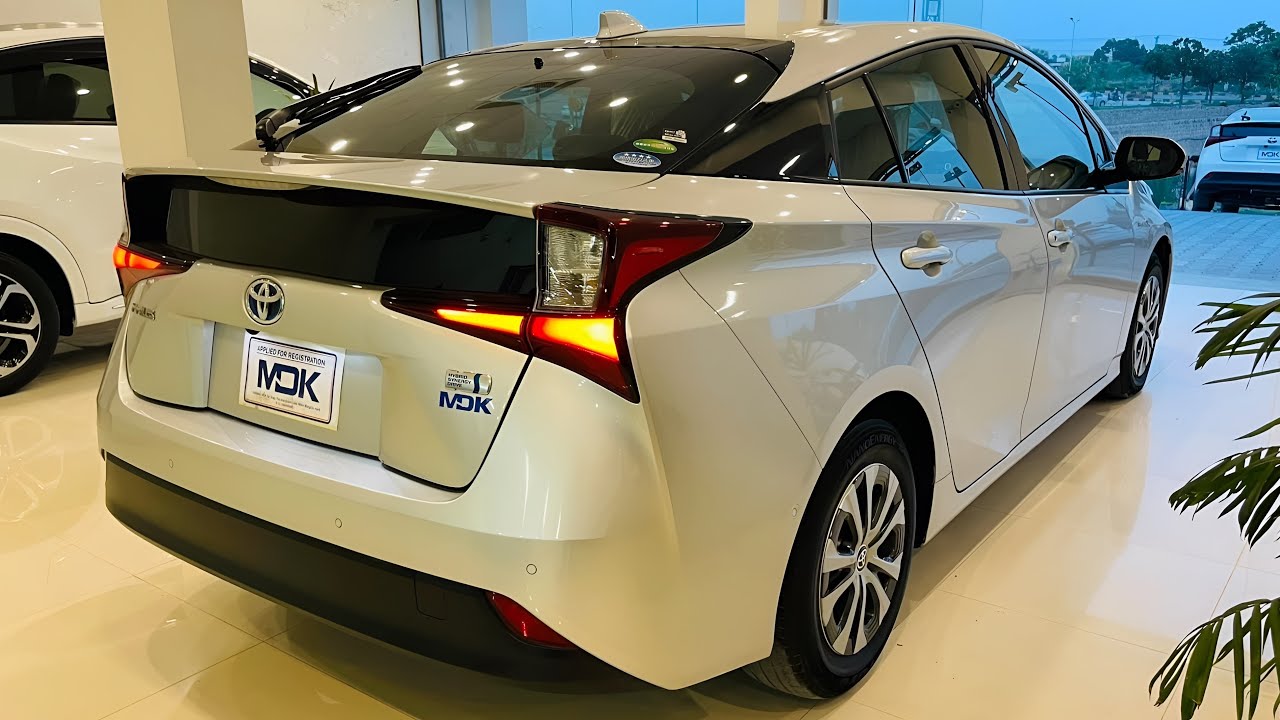
However, the Prius falls short with its underwhelming interior materials, which may disappoint buyers expecting a more refined cabin, especially at this price point.
Adding to the concerns is its surprisingly low predicted reliability score, casting doubt on a model typically known for dependability.
While it remains efficient and practical, the 2020 Prius finds it increasingly difficult to stand out in a growing field of hybrid competitors.
3. 2016 Fiat 500X
Striking Italian design and agile handling make the 2016 Fiat 500X a compelling option for city dwellers. Its compact, space-efficient layout helps it stand out in the crowded subcompact SUV segment, while the user-friendly infotainment system adds convenience to everyday driving.
However, not everything about this Fiat is rosy. The rear seats are notably tight, which could be uncomfortable even for shorter passengers. In addition, its lower-than-average predicted reliability might give pause to buyers who prioritize long-term dependability.
Thanks to its energetic drive and stylish exterior, the 500X makes for a fun partner in urban settings—but when daily demands start piling up, it may not be the most practical choice.
The 2016 Fiat 500X comes standard with a turbocharged 1.4-liter four-cylinder engine that delivers 160 horsepower, paired with a six-speed manual transmission.
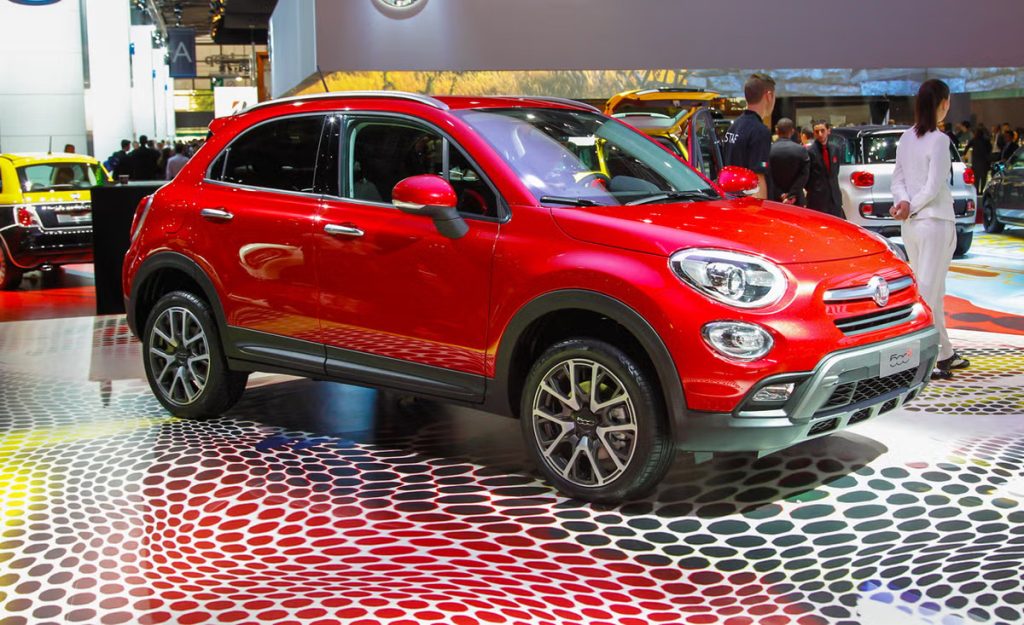
An optional 2.4-liter four-cylinder engine is available, producing 180 horsepower and matched with a nine-speed automatic transmission. The EPA estimates the base 2016 500X achieves 25 mpg in the city and 34 mpg on the highway, which is typical for its class.
Test drivers report that the base engine provides sufficient power for everyday driving needs. While the larger engine offers a bit more punch, automotive reviewers criticize it for being noisy and lacking refinement.
Opinions on the standard manual transmission are mixed—some reviewers mention it can feel vague at times, while others note it shifts smoothly. The available nine-speed automatic transmission receives criticism from several critics, who say it struggles to select the appropriate gear.
4. 2021 Audi Q5
The 2021 Audi Q5 stands out for its refined build quality and composed road manners. This luxury compact SUV impresses with a premium interior that expertly balances comfort and agility, complemented by an array of advanced tech features.
Few competitors manage to blend practicality and luxury so effectively.On the downside, the infotainment system can be complex and takes time to get used to.
More importantly, its low predicted reliability score may give prospective buyers pause, impacting its overall desirability.
Despite its upscale feel and confident performance, the 2021 Q5’s appeal is dampened by concerns over reliability and user-friendliness of its tech.
The 2021 Audi Q5 is offered in three trims: Premium, Premium Plus, and Prestige. Buyers can choose between multiple versions and powertrains, including the standard Q5 with a turbocharged four-cylinder engine, the plug-in hybrid (PHEV) Q5 that pairs a turbo-four with an electric motor, and the performance-focused SQ5, which is powered by a twin-turbocharged V6.
The regular and PHEV Q5 models are equipped with a seven-speed dual-clutch automatic transmission, while the SQ5 features an eight-speed automatic. All models come standard with Audi’s Quattro all-wheel-drive system.
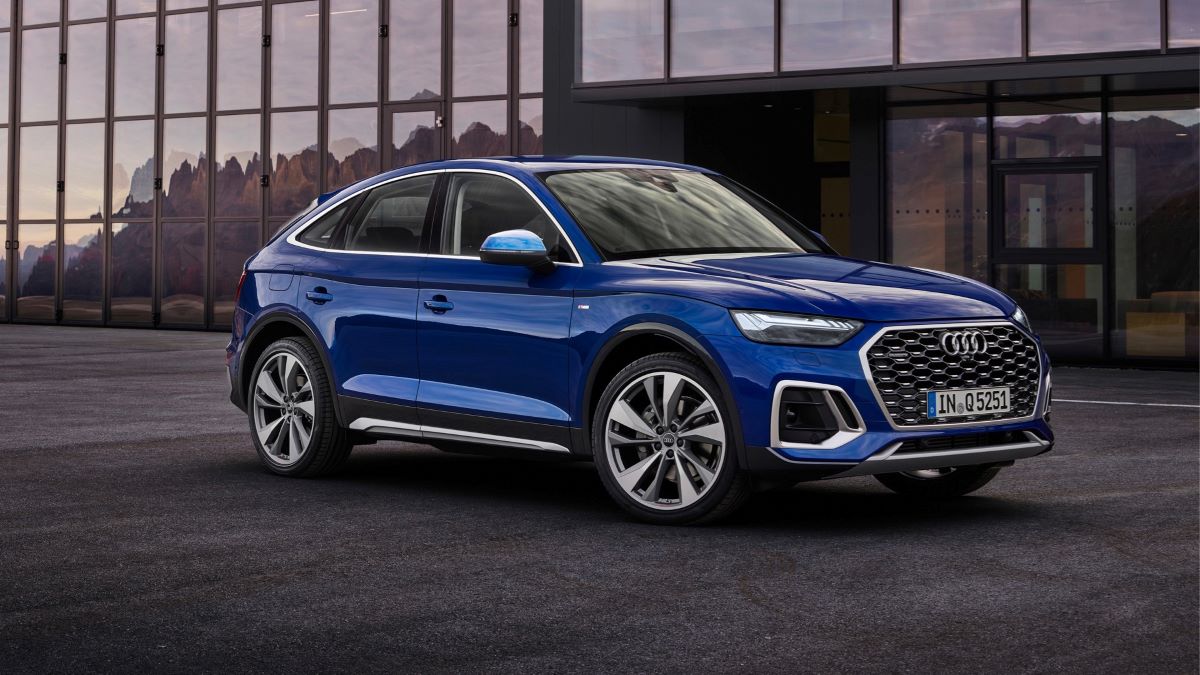
In addition to the standard Q5 body style, Audi also offers the Q5 Sportback, a coupelike variant of the non-hybrid Q5 and SQ5. While it delivers a more stylish silhouette, it sacrifices some practicality with less cargo space and slightly reduced rear-seat headroom.
The SQ5 version of this trim also adds an adaptive damping suspension, upgraded leather upholstery, and performance brakes.
Optional features for the Q5 Premium include proximity keyless entry, a heated steering wheel, a panoramic sunroof, satellite radio, and a 19-speaker Bang & Olufsen sound system.
Stepping up to the Q5 Premium Plus brings additional features such as a 12.3-inch digital instrument cluster (Audi Virtual Cockpit), satellite radio, proximity keyless entry, a heated steering wheel, adaptive cruise control, traffic-jam assist, lane-keeping assist, a surround-view parking camera system, and a panoramic sunroof. Available upgrades include built-in navigation and ventilated sport front seats.
The PHEV variant of this trim can be configured with an adaptive air suspension, brushed aluminum inlays, and a few unique styling enhancements. The SQ5 version includes a rear differential, sport-tuned suspension, red brake calipers, dynamic steering, and high-gloss black exterior accents.
At the top of the range, the Q5 Prestige adds premium features such as a Bang & Olufsen audio system, built-in navigation, matrix-design LED headlights, and a head-up display. Ventilated front seats are available as an option. SQ5 models in the Prestige trim also receive heated rear seats.
5. 2021 Chrysler Pacifica
The 2021 Chrysler Pacifica delivers spacious accommodations and a family-friendly layout, featuring a high-quality interior and impressive versatility.
With its smooth ride, optional all-wheel-drive system, and one of the most intuitive infotainment interfaces available, it stands out as a strong option for families needing extra room and modern conveniences.
However, its predicted reliability rating lags behind the class average, raising concerns for those considering long-term ownership.
And while comfort is a strong suit, the Pacifica’s driving dynamics aren’t quite as polished as some of its rivals. For buyers focused on space and technology, the Pacifica remains a solid pick, though its flaws may prompt others to consider alternative options.
When you’re operating at the peak of your segment—and in our view, the Chrysler Pacifica certainly is—ongoing refinement is essential to stay ahead.
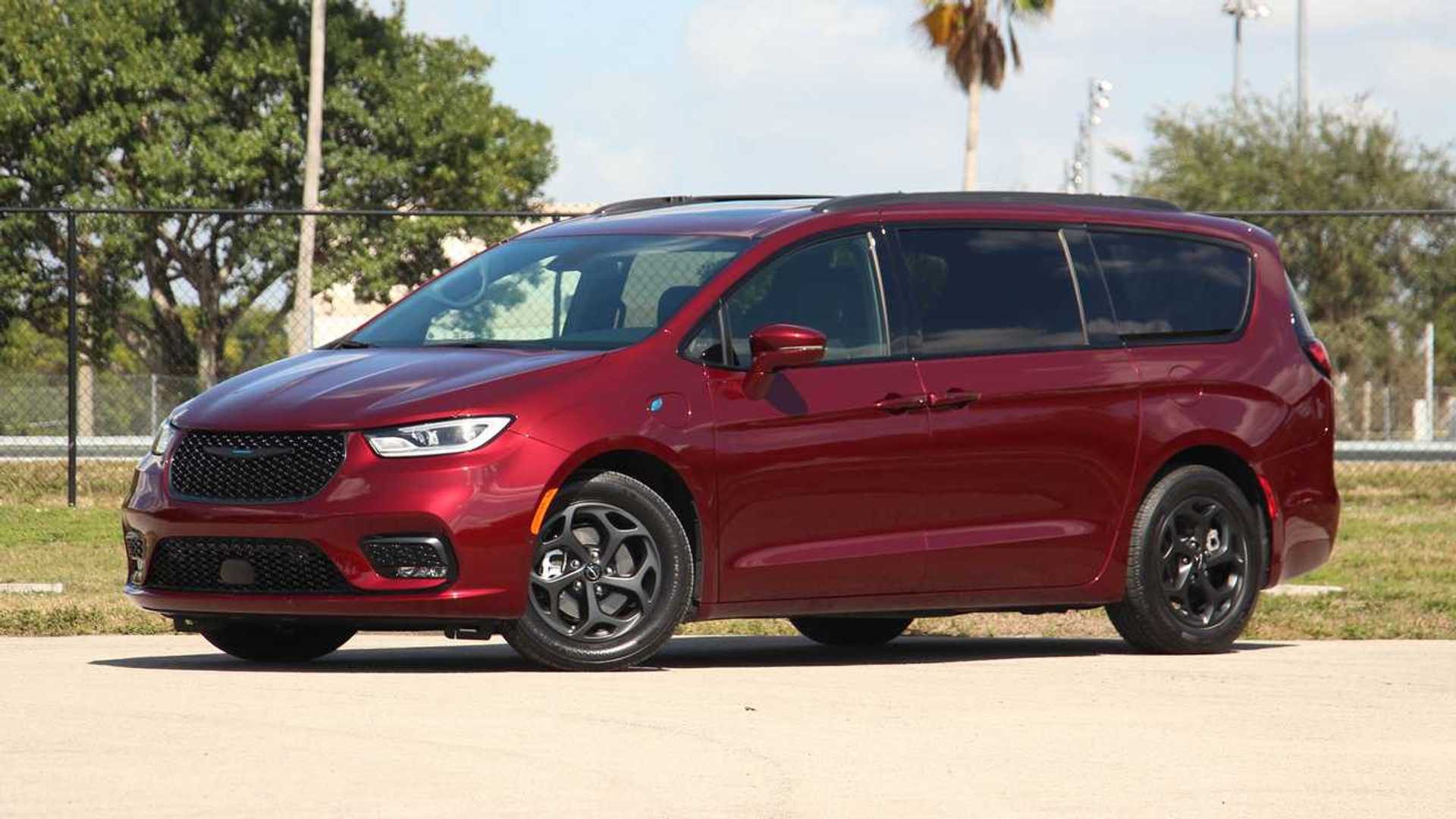
With growing pressure from full-size family SUVs, a refreshed Honda Odyssey, and a completely redesigned Toyota Sienna, Chrysler has responded with meaningful upgrades to the Pacifica. These updates include a bolder front-end design, the addition of all-wheel drive, and a new top-tier trim.
The 2021 Pacifica sports a significantly larger grille and more angular headlamps, resulting in a more confident, if not aggressive, front appearance. The redesign adds undeniable visual appeal.
At the rear, a new full-width LED light strip connects the taillamps, giving the back end a clean, contemporary look.
After repositioning the base L and LX trims under the Chrysler Voyager name in 2020, Chrysler has nudged the Pacifica upmarket with the 2021 introduction of the Pinnacle trim.
Though it shares the exterior updates seen across the refreshed Pacifica lineup, the Pinnacle adds distinctive bodyside badging, exclusive wheel designs, and a luxurious caramel-colored quilted leather interior.
The Pinnacle model also features a unique center console that stretches from the dashboard to the rear of the front seats, setting it apart in design and function.
Rear-seat passengers in the second row are treated to upscale leather and suede lumbar pillows—evoking the kind of luxury touches typically found in high-end sedans from Mercedes-Maybach and Rolls-Royce.
Both Limited and Pinnacle trims gain acoustic glass for the front side windows and windshield, designed to improve cabin quietness. While the change might not be obvious to the ear, testing did reveal a measurable 1-decibel drop in cabin noise during highway cruising at 70 mph.
All 2021 Pacifica models now come standard with a larger 10.1-inch touchscreen infotainment display featuring the brand’s updated Uconnect 5 software.
This new interface allows for simultaneous connection of two devices and supports up to five user profiles, each customizable for individual driver preferences. Additionally, it supports over-the-air updates for ongoing enhancements.
The updated Uconnect system maintains the intuitive interface of its predecessor while introducing new functionality like wireless Apple CarPlay and Android Auto.
In a nod to a similar feature in the Honda Odyssey, Chrysler has introduced an in-cabin video feed called FamCam. This system uses an overhead camera to let drivers monitor children in rear-facing car seats—or settle disputes over those leather pillows.

